TETRAHEDRITE (TANZANITE)
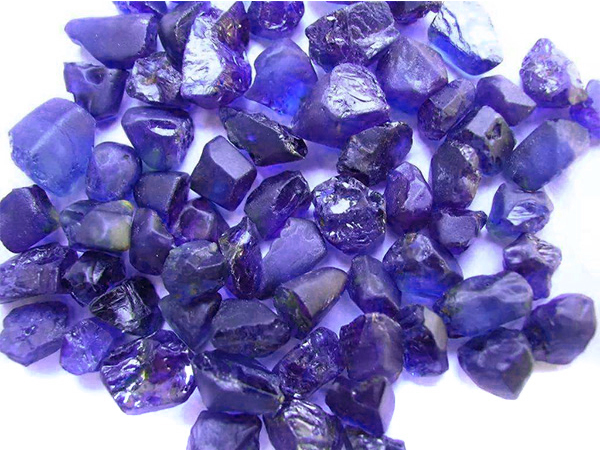
The crystal is columnar (the crystal plane has vertical stripes), and a common rod-like or granular aggregate is common. It is gray, green, yellow, brown and red, blue and other colors. Translucent - opaque. Glass luster. Biaxial crystal positive light, +2v = 0o ~ 65o. The refractive index ng=1.697 to 1.725, nm=1.688 to 1.710, np=1.691 to 1.705; and the bifold ratio is 0.004 to 0.008. Polychromaticity is generally weak, and darker people are more pleochroic.
The dispersion value is 0.006 to 0.013 and the hardness is 6. The relative density is 3.25 to 3.36.
Introduction
The zoisite is a calcium-aluminum hydroxy-isolated tetrahedral mineral, also a silicate mineral, belonging to the group of epidote.
Crystal structure
Orthorhombic system.
form
Common columnar crystals.
Physical properties
Commonly greenish blue with brown tones, as well as gray, brown, yellow, green and so on. Transparent, glassy. The cleavage is not developed, and the shell-like to the staggered fracture. Hardness 6~7. The proportion is 3.35.
The hardness of the zoisite exceeds the Mohs hardness of 6 and the specific gravity is between 3.10 and 3.38 depending on the stone type.
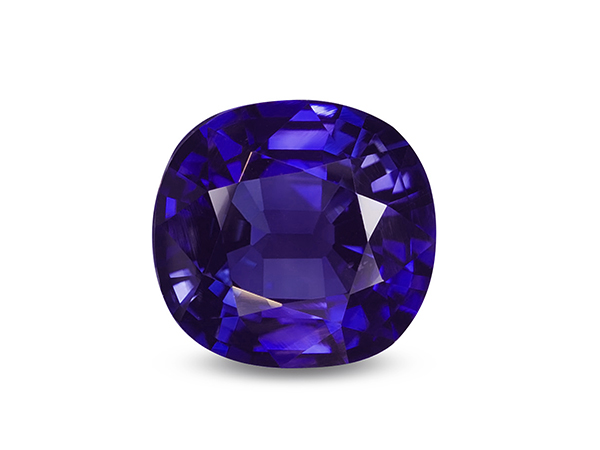
Polychromism, refractive index values, and density values. Parallel linear stripes visible on the crystal face are important features on the shape of the zoisite.
Causes and occurrences: The zoisite is produced from a variety of rocks, including metamorphic rocks, which are products of metamorphism in the low- to intermediate-level regions, sedimentary rocks and granites, and can also be products under hydrothermal alteration.
The main purpose
The color is beautiful, the transparent can be used as a gemstone, and the tanzanite is especially famous.
other
In the 1960s, blue-to-purple scutellite transparent crystals, also known as tanzanite, were discovered in Tanzania.
name
The zoisite was named after the Slovenian scientist Sergei Zoigs. In 1805, mineral distributor Simon Presen discovered it at the Shah Api Mountain in the Koroska region of Slovenia, and Simon brought the mineral to the Baron. After determining the type of stone, the baron was originally named saualpite. The zoisite is contained in metamorphic rocks and crystalline granite veins. It is represented by colorful orthorhombic crystals or in the shape of large clumps. There are many colors in the zoisite: blue, violet, green, Brown, pink, yellow, gray or colorless.
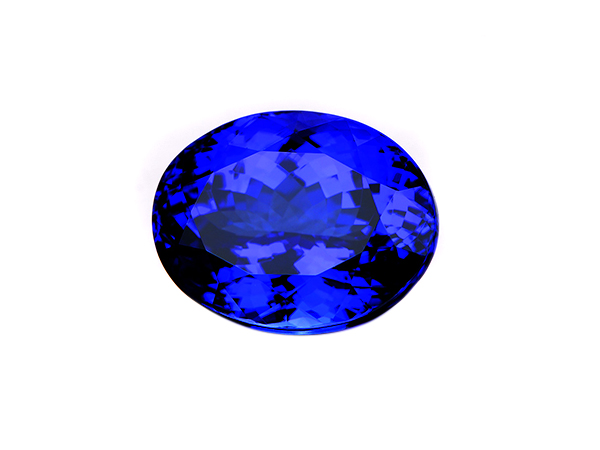
Zoisite (calcium aluminum hydroxy citrate, Ca2AlOAl2(SiO4)(Si2O7)(OH)) is a naturalist who first discovered the mineral in the Safang Alps in Austria - S. Zois (1947~1819) Named after the name; a member of the epidote mineral family - a mineral with a complex crystal structure: the interior of the mineral is connected by an island, a single silicon oxytetrahedron (SiO2) and two siloxane tetrahedrons The structural unit (Si2O7) is composed of; the orthorhombic system, common columnar crystal, and the longitudinal linear line visible on the crystal surface is an important feature on the shape of the zoisite stone hardness 6~6.5, specific gravity 3.55; with glass luster, transparent or translucent, color is colorless, white, gray, green, yellow brown, yellow, blue, pink, etc.; zoisite has multiple variants For example, green ochre stone symbiosis with ruby and pink manganese zoisite, etc. these varieties are mostly produced in an opaque block shape, so they are not suitable as gemstones, only blue-purple enamel The scutellite variant - also known as tanzanite (also known as tanzanite, tanzanite or moonstone), is a jewel-grade mineral.
distribution range
The zoisite is produced from a variety of rocks, including metamorphic rocks, which are products of metamorphism in the low- to intermediate-level regions, sedimentary rocks and granitic rocks, and products under hydrothermal alteration.
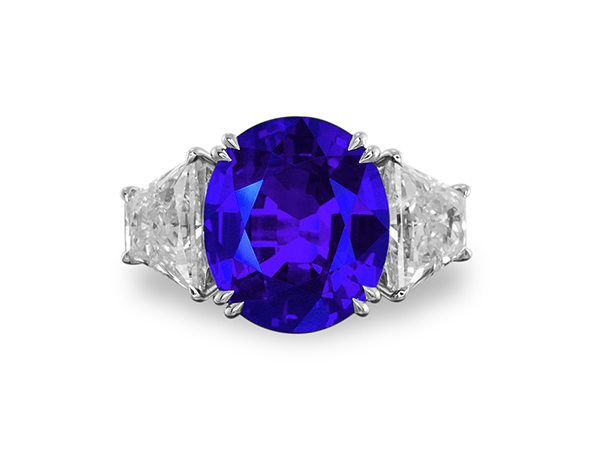
The zoi stone with white stripes is considered to be brittle. Diagonal scutellite is the most common monoclinic zoisite. Different origins produce different zoisites. Norway mainly produces manganese zoisite. Tanzania mainly produces tamsan zoi and red enamel curtain stone. Produced in Hongbao zoisite, other countries, such as Switzerland, Austria, India, Pakistan and the United States, produce zoisite.
Ruby symbiosis in the red enamel curtain stone is a very good sculptural material.
Another mineral produced in India, the red chrome mica, the red enamel curtain stone and the red chrome mica are similar in appearance, they are quite good carving materials, people are easy to confuse them.
Economic use
Beautiful color, even transparent can be used as a gem; Tanzanite is especially famous!
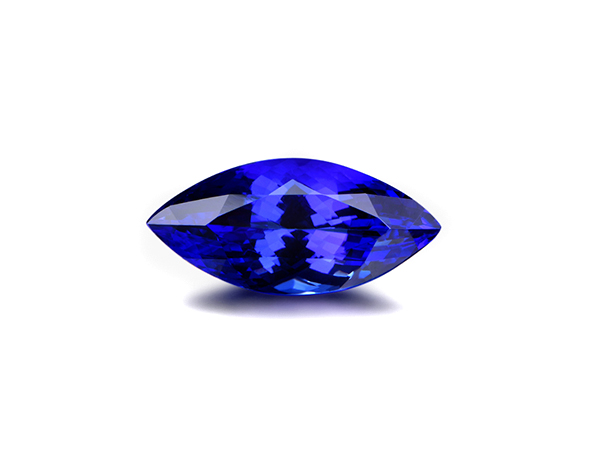
Nearly two centuries ago, the zoisite was used only as a decorative stone in a few areas; therefore, many jewelers and mineralogists fell below the glasses in 1967: I did not expect the unobtrusive zoisite. There is such a beautiful and unique blue-violet variant - tanzanite.
In 1967, the jeweler of New York-based Tiffany-LouisComfortTiffany presented the newly discovered gemstone "Tanzanite" to the world. It is believed that the first gemstone was discovered in northern Tanzania. Masai herders in Arusha.
According to legend, a bolt of lightning hit a spot near the foot of the Kilimanjaro volcano, near the mountains of Merelani, and ignited the raging fire on the surrounding grass. Later, when the Mazhai herders rushed the animals and returned to the area.
At that time, many stones shining in the blue-violet light were found on the ground in the sun, so the herdsmen picked up these gems, Tanzanite, which was the earliest collector of tanzanite. In fact, there is another behind-the-scenes hero who really shows Tanzanite to the world. He is a Portuguese geologist DeSouza! When he traveled to the area, he noticed this dazzling blue-purple stone and helped Tiffany introduce the discovery to the world two years later.
When he traveled to the area, he noticed this dazzling blue-purple stone and helped Tiffany introduce this exciting discovery to the world two years later.
Originally, this beautiful gem was called "blueZoisite" in the jewellery world - blue zoisite. However, this name sounds quite similar to the "suicide suicide" in English, so LouisComfortTiffany suggested "tanzanite" The name tanzanite was replaced by the place where the gems were discovered, the newly established Tanzanian United Nations. Since then, the name tanzanite has been widely used in the world.
Tanzanite can be said to be a gift from Heaven to the people of Tanzania! So far, the area around Arusha in Tanzania is still the only source of tanzanite in the world; although there are very few mineral deposits in the Kenya area of Africa, it is also rare because of the scarcity of mineral deposits.
In fact, tanzanite is a kind of zoisite containing a trace amount of vanadium (V). The vanadium content is about 0.02~2%. Because of the trace element content, the color of tanzanite is unique, from purple to indigo. It has pleochroism.
If you look at the top tanzanite from different directions, you can also see the three colors of purple, yellow, and dark blue. In general, a slightly green or brown tanzanite can be colored by heat treatment - heated to about 500 degrees Celsius, transforming it into a bright blue-violet gemstone. Since the hardness of tanzanite is not high, only Mohs hardness is 6.5~7. Therefore, when maintaining jewelry, ultrasonic vibration cleaning should not be used.
In addition, the gemstone should not be subjected to strong temperature changes or contact with acidic solution.
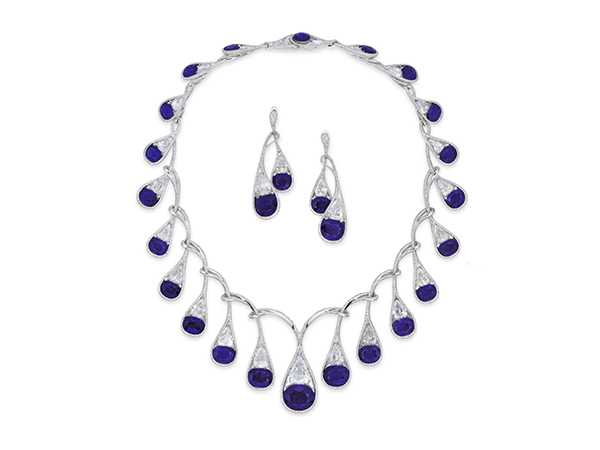
The zoi stone originated from the foot of the Mirlanyi mountain in the foothills of Kilimanjaro. This stone of fire has always hidden her moving face to the nomadic Marses, until she opened her veil in 1967. According to legend. A beam of lightning hit the area near the Mirlanyi Mountains and ignited a raging fire on the surrounding grasslands. When the Masai herders rushed back to the animals, they found many blue stones dotted on the ground.
Curiously, the usual reason cannot explain this phenomenon because the temperature released by the grassland fire is not enough to cause this dramatic change. In fact, the discovery process of the zoisite is as magical as the gems themselves. We couldn't tell who first discovered the gems. The locals said that they were the tribe's Ayreju Vatu, who found a translucent tanzanite crystal at the foot of Mount Kilimanjaro. He shared his findings with local miner Di Sooza. Di Sooza was intended to find rubies in this area, but found a "sapphire".
Gemologists quickly figured out her identity because of its numerous blue and complex ingredients. Interestingly, the legendary Scottish gemologist Cambri Buri went to Tanzania in 1967 to work as a consultant for the company, but he also discovered the saffron stone, and he also The first person to identify the curtain stone belt to the GIA (American Gem Society) gem trade laboratory in the United States.
Soon, the zoistone opened its way in the United States and stood at the heel of the company. The grandson of Louis Confort Tiffany, who later became the president of Tiffany & Co., was ecstatic because of its beauty, but felt that her name "Blue Curtain Stone" was not satisfactory. The English pronunciation of "Blue Curtain Stone" is similar to the pronunciation of "Blue Suicide", because any popular thing is popular name, so people renamed this rare and exotic African gemstone into a zoi stone. At the official launch of the zoistone in October 1968, Pratt made this assessment: "She is the most beautiful sapphire she has discovered in the past 2,000 years."
The purple-blue flame of the zoi stone quickly caused a worldwide storm, which people called "the gems of the 20th century." Due to the increasing global appeal, the demand for this gemstone jewel has soared. In the two years of 1998 and 1999, the company was on the top of the world's best-selling colored gemstones. In 2002, the zoi stone was chosen as the birthstone of December (this is the first change in the birth of the stone watch since 1912), and she is seen as the ideal stone to celebrate a new life or a new beginning. This symbolic meaning comes from the cultural tradition of her discovery of Marseilles. The locals think that blue is the color of the divine spirit. When a woman has a baby at home, the neighbors send her blue beads or blue robes. Today, this tradition has changed because of the discovery of the zoisite, because people have converted the zoistone as a gift. They believe that this gift will protect the healthy growth of newborns and achieve a positive and successful life.
The zoi stone continues to prevail in the trend of contemporary jewelry. Paris's "naughty kids" Tom Ford and Milan's Gu Cui pop house, the collection of exotic sapphire, including zoi stone, is full of gantry.
At the 2004 Oscar Awards ceremony, mother Seaa Puning almost robbed the Oscar-winning winner, her son, Shang Puning, just because she wore dazzling diamonds and zoi stones.
This is true
The main success of the zoisite is its multi-color phenomenon. She has more blue light than the midnight starry sky. When looking at gems from different angles, it will show different colors. Usually, zoisite will show a series of blue changes in daylight, and in the incandescent light (candlelight, dusk), peach and violet will appear. Usually you will see two colors at the same time, especially when the brightness of the glazed stone in Dakla is enhanced.
People hang down the curtain stone because of its rarity. The zoisite is not only slow to generate, but the number is decreasing day by day. Many experts point out that in a few years, this gemstone may disappear from the earth. Therefore, the prestige of this gem is strengthened. After all, having beautiful and unique things is an important symbol of fashion life. The zoi stone is only produced in Mirlanyi, Tanzania, East Africa. The zoisite was formed during the movement of rock formations 585 million years ago. In that movement, vanadium is formed, which is often described by the gemological community as a special geological phenomenon. Some gemologists even think of this accidental crust. There is only one in a million possibilities for exercise elsewhere.
The zoisite deposits are parasitic in metamorphic rocks, marble and schist in Mozambique (Lift Valley). The zoisite deposits pass through the low hills of Mirlanyi, which rises from the Sanya plain near Mount Kilimanjaro. The sedimentary layer is at an angle of 41 degrees to the ground, and the sedimentary layer or horizontal line periodically wrinkles, thereby creating a shoal stone bag-shaped sedimentary layer.
Covering an area of only 20 square kilometers, the zoisite mining area has been divided into four different sections (A, B, C and D). Special funds are allocated for mining in different locations. In the C section of the mining, the largest investment and the most advanced mining technology support, the average treatment of each ton of rough Tanzanian rock to get 22 carats (4.4 grams) of gemstones.
In all of the zoistone mining, less than 1% of the zoisite mining shows that although all grades have 3A color zoisite, the D section has the highest probability of producing the top grade, with a red flash. Dark violet, but the difficulty of mining in section D is just like the ancient French mines, which are almost difficult to mine. Many jewelers have missed the 3A grade zoi stone produced in section D.
At the same time, most of the high quality zoi stone sold in the world comes from section C. The grade 4A grade zoi stone is sometimes called 3A. “D-Stone” (this is the most mundane way to describe the most romantic gemstones), GemsTV uses the term 4A to clearly distinguish the beautifully colored zoisite from the 3A zoi stone from other segments. Grade 4A zoisite is the best quality gems we sell from Gems.
Typical zoisites are blue burgundy crystals, mostly pure lavender, violet and blue. Occasionally, other extremely rare colors (pink, green, bud, and two colors) are also present. Color varieties are rare and are often collected by collectors. From a technical point of view, the correct name of these gemstones should be (color) zoisite, but in the market people are often called color zoisite, which is widely accepted because of its color characteristics and its origin.
This name is easy to communicate and communicate. The zoisite is also popular, and it is suitable for people of all ages, young and old. However, her number is scarce and will be less and less, in addition to the happiness of having one of the most precious gems of the century, those who already have zoisite, or before this famous gem is about to dry up For the lucky ones who are planning to buy, it will become a practice to use this precious gem as a heirloom to be passed down from generation to generation.
The luscious, imaginative, and imaginative range of cuts makes this gem more visible. The popular earrings and pendants reflect the perfect effect of the zoi stone, but the zoi stone is more commonly used to embellish the remarkable precious ring, fully demonstrating its unparalleled luster.
